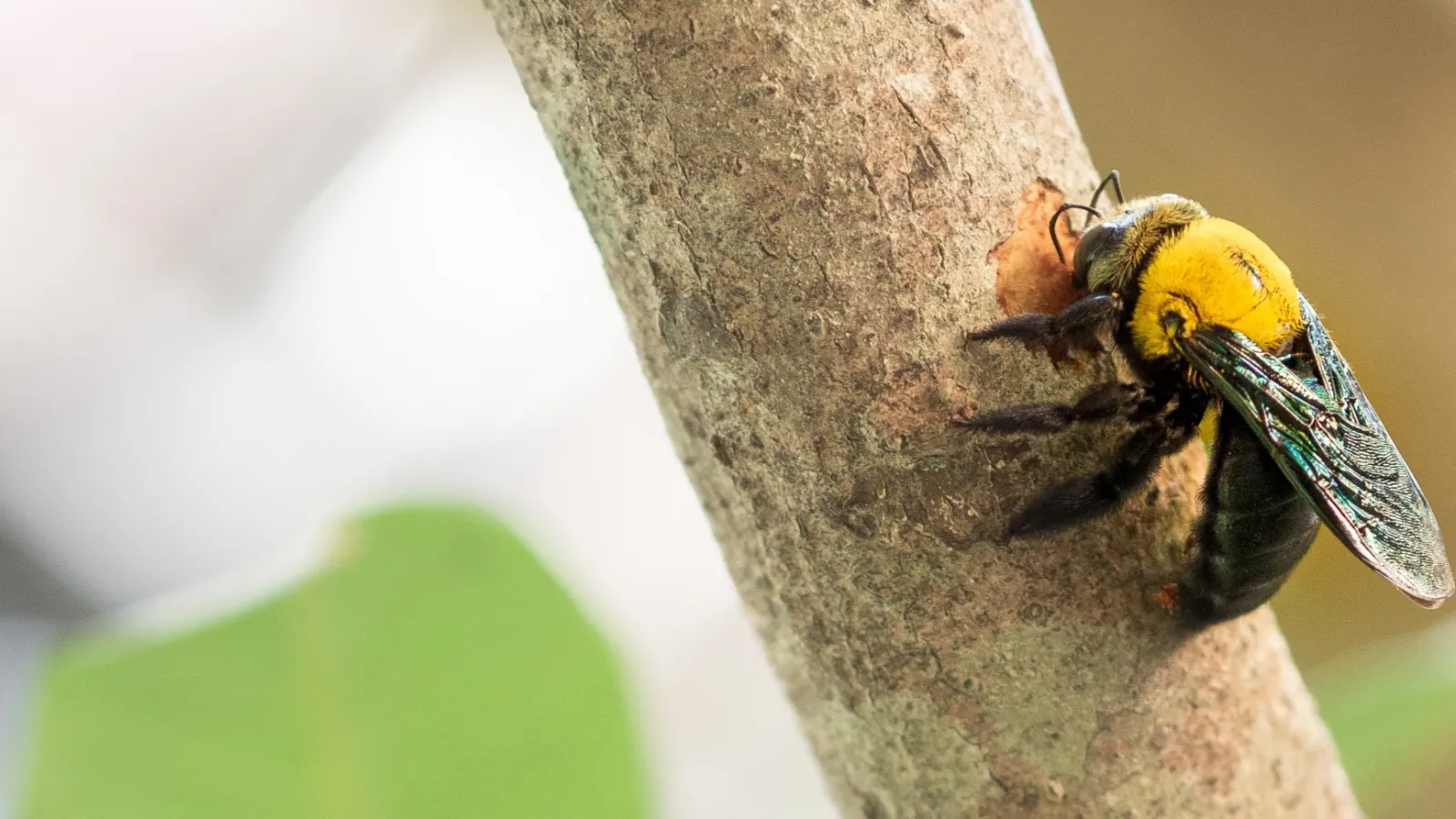
Carpenter Bees
Latin Name: Xylocopa violacea
Carpenter bees are solitary insects resembling bumblebees but with shiny, smooth abdomens. While they are not aggressive and rarely sting, their habit of boring into wood can cause significant damage over time. Carpenter bees are known to return to the same area year after year, exacerbating the problem if not addressed.
Why Carpenter Bees Keep Coming Back
- Attraction to Previous Holes: Carpenter bees are drawn to previously drilled holes as they provide a convenient starting point for new nests.
- Pheromone Markings: They leave behind pheromones in the wood that attract other carpenter bees, ensuring the cycle continues.
- Favorable Conditions: Untreated or unpainted softwoods, like cedar, pine, or redwood, are highly attractive to carpenter bees.
Signs of Carpenter Bee Activity
- Round Holes: Perfectly round entry holes about ½ inch in diameter are the most noticeable sign.
- Sawdust: Fine sawdust (frass) beneath the entry holes.
- Staining: Yellowish or brownish streaks caused by excrement near the holes.
- Buzzing Sounds: Audible near the affected wood, especially during active nesting seasons.
Damage Caused by Carpenter Bees
- Weakened Wood Structures: Carpenter bees tunnel into wood to lay eggs, which can weaken beams, siding, decks, and eaves.
- Expanding Damage: Over time, multiple generations expand the tunnels, creating more extensive networks.
- Cosmetic Damage: The holes and accompanying stains can mar the appearance of wood surfaces.
- Secondary Damage: Woodpeckers may attack the wood to feed on bee larvae, further damaging the structure.
How to Prevent Carpenter Bee Damage
- Paint or Stain Wood: Treated wood is less attractive to carpenter bees than raw, unfinished wood.
- Seal Holes: Fill existing holes with wood filler or caulk and repaint the area to discourage reuse.
- Use Hardwood: Consider replacing softwood with hardwood for exposed areas.
- Apply Insecticide: Treat wood with a residual insecticide in spring before the bees emerge.
- Install Bee Traps: Place traps near affected areas to capture and reduce the population.
Professional Help
If carpenter bees are a recurring problem, Mares Exterminating can help identify nesting areas, eliminate active infestations, and apply treatments to protect your property. Preventative measures combined with professional intervention can break the cycle and protect your wood structures from long-term damage.
Similar pests: Yellow Jacket Wasps
